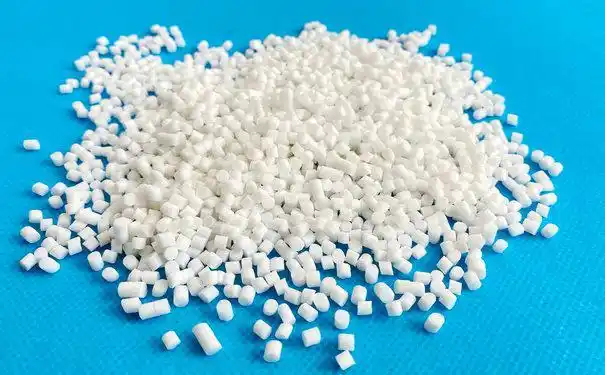As someone who’s been in the materials and manufacturing industry for over a decade, particularly focusing on polymers and their applications in various sectors, I’ve seen firsthand how critical material selection is for product safety and performance. One question that often pops up, especially from those designing products for industries like electronics, automotive, or consumer goods, is: Is TPE elastomer material fire-resistant? This is a valid concern, especially when fire safety is non-negotiable in applications like cable jacketing, automotive parts, or medical devices. In this article, I’ll dive deep into the fire resistance of thermoplastic elastomers (TPEs), explain their properties, share practical insights from my experience, and provide actionable advice for those considering TPEs in fire-sensitive applications.

Understanding TPE and Its Inherent Properties
Before we get to the fire resistance part, let’s establish what TPEs are. Thermoplastic elastomers are a fascinating class of materials that combine the flexibility and elasticity of rubber with the processability of thermoplastics. They’re widely used in everything from phone cases to automotive seals because they’re lightweight, durable, and easy to mold. But when it comes to fire resistance, TPEs have a bit of a reputation to unpack.
In my early days working with TPEs, I was involved in a project designing cable insulation for consumer electronics. The client wanted a material that was flexible, cost-effective, and—crucially—safe in case of a fire. That’s when I learned that TPEs, in their base form, are not inherently fire-resistant. Most TPEs, especially those based on styrene-ethylene-butylene-styrene (SEBS) or polypropylene (PP) blends, are highly flammable due to their organic polymer structure. This means they can ignite easily and contribute to fire spread if not properly modified.
However, this doesn’t mean TPEs are a no-go for fire-sensitive applications. The key lies in formulation and additives. Over the years, I’ve worked with manufacturers who’ve tailored TPEs to meet stringent fire safety standards by incorporating flame-retardant additives. Let’s explore this in detail.
Why Are TPEs Naturally Flammable?
To understand why TPEs aren’t naturally fire-resistant, we need to look at their composition. TPEs are typically made of:
Hard segments: These are crystalline domains, often based on materials like polypropylene or polystyrene, which provide structural integrity.
Soft segments: These are amorphous, rubber-like domains (e.g., ethylene-butylene or butadiene) that give TPEs their elasticity.
Both components are organic and hydrocarbon-based, which makes them prone to combustion. When exposed to heat, TPEs soften and can reach a state where they flow freely, but they don’t melt into a liquid like traditional thermoplastics. If ignited, they burn readily, releasing heat and, in some cases, significant smoke. This was a lesson I learned the hard way when a batch of unmodified TPE we used in a prototype caught fire during a lab test, leading to a quick redesign with flame-retardant additives.
Key takeaway: Unmodified TPEs are highly flammable, but with the right modifications, their fire resistance can be significantly improved.

Enhancing TPE Fire Resistance with Flame Retardants
The good news is that TPEs can be engineered to be fire-resistant by adding flame-retardant compounds. In my experience, this is where the magic happens. Manufacturers use various additives to reduce flammability, slow flame spread, and minimize smoke production. Here are the main approaches:
Halogen-Based Flame Retardants: These are highly effective at suppressing flames but have fallen out of favor due to environmental concerns. They can release toxic gases like hydrogen halides when burned, which is a dealbreaker for many applications. I’ve seen clients in the EU market steer clear of halogenated TPEs due to RoHS (Restriction of Hazardous Substances) compliance.
Halogen-Free Flame Retardants: These are the go-to choice for modern applications. Common additives include:
Phosphorus-based compounds (e.g., piperazine pyrophosphate or aluminum hypophosphite): These promote char formation, which acts as a barrier to heat and oxygen, slowing combustion.
Metal hydroxides (e.g., magnesium hydroxide or aluminum hydroxide): These release water vapor when heated, cooling the material and diluting flammable gases.
Intumescent systems: These create a foamy char layer that insulates the material from heat.
Nanomaterials: In recent years, I’ve seen innovative approaches using black phosphorus nanosheets or organophosphate-functionalized montmorillonite to enhance fire resistance while maintaining mechanical properties. These are cutting-edge but not yet mainstream due to cost.
Real-world example: A few years back, I worked with a client producing wire harness covers for electric vehicles. They needed a TPE that could pass the UL-94 V-0 rating, a stringent fire safety standard. We collaborated with a compounder to formulate a TPE with a piperazine pyrophosphate (PAPP) and aluminum hypophosphite (AHP) blend. The result? The TPE achieved V-0 status with only 23% flame-retardant loading, and it still maintained excellent flexibility and tensile strength.
Fire Resistance Standards for TPEs
When evaluating TPEs for fire resistance, you’ll often encounter industry standards like UL-94, which is widely used for plastics and elastomers. Here’s a quick breakdown of the key ratings:
|
Standard |
Rating |
Description |
Suitability |
|---|---|---|---|
|
UL-94 |
V-0 |
Flame extinguishes within 10 seconds; no flaming drips. |
Ideal for high-risk applications like electronics. |
|
UL-94 |
V-1 |
Flame extinguishes within 30 seconds; no flaming drips. |
Suitable for less critical applications. |
|
UL-94 |
V-2 |
Flame extinguishes within 30 seconds; flaming drips allowed. |
Acceptable for low-risk consumer goods. |
|
UL-94 |
HB |
Horizontal burning; slowest burn rate. |
Not suitable for fire-sensitive applications. |
In my projects, I’ve found that UL-94 V-0 is the gold standard for applications where fire safety is critical, such as cable jacketing or automotive interiors. Some TPE formulations, like those from RTP Company or Angreen, are specifically designed to meet this rating while retaining flexibility.
Another important metric is the Limiting Oxygen Index (LOI), which measures the minimum oxygen concentration needed to sustain combustion. Pure TPEs typically have an LOI around 17-20%, meaning they burn easily in normal air (21% oxygen). Flame-retardant TPEs can push the LOI to 24-27%, significantly improving fire resistance.

Comparing TPE Fire Resistance to Other Materials
To put TPEs in context, let’s compare their fire resistance to other common materials:
|
Material |
Fire Resistance |
Pros |
Cons |
|---|---|---|---|
|
TPE (Unmodified) |
Poor (LOI ~17-20%) |
Flexible, cost-effective |
Highly flammable, burns readily |
|
Flame-Retardant TPE |
Good (V-0, LOI ~24-27%) |
Flexible, meets safety standards |
May compromise mechanical properties |
|
Silicone |
Excellent (LOI ~30-40%) |
High heat resistance, low smoke |
More expensive, harder to process |
|
Natural Rubber |
Poor (LOI ~18-22%) |
Highly elastic |
Flammable, requires vulcanization |
My take: Silicone is the champion for fire resistance, as it can withstand temperatures up to 450°C without melting and produces less smoke. However, it’s pricier and less versatile for injection molding compared to TPEs. If budget and processing ease are priorities, flame-retardant TPEs are a solid middle ground.
Challenges of Flame-Retardant TPEs
While flame-retardant TPEs are a game-changer, they come with trade-offs. Here’s what I’ve learned from working with them:
Mechanical Property Trade-Offs: Adding flame retardants can reduce tensile strength or elasticity. For example, a client once complained that their flame-retardant TPE felt “stiffer” than expected. We had to tweak the formulation to balance fire resistance and flexibility.
Cost: Flame-retardant additives, especially halogen-free ones, increase material costs. In one project, switching to a halogen-free TPE raised the material cost by 15%, but it was worth it for EU market compliance.
Smoke and Toxicity: Even with halogen-free additives, some TPEs produce smoke when burned. If low smoke is critical (e.g., in public transportation), you’ll need to prioritize intumescent or phosphorus-based systems.
Processing Challenges: High loadings of flame retardants can affect flowability, making extrusion or injection molding trickier. I’ve seen this cause issues like surface imperfections in molded parts, which required adjusting processing parameters.
Pro tip: Always work with a reputable compounder who can customize the TPE formulation to balance fire resistance, mechanical properties, and processability. Companies like ATPolymer or Mei Wang Chemical have extensive experience in this area.
Applications Where Fire-Resistant TPEs Shine
Despite their challenges, flame-retardant TPEs are a go-to choice for many industries. Here are some examples from my experience:
Electronics: Cable jacketing and connectors often use flame-retardant TPEs to meet UL-94 V-0 standards. I’ve worked on projects where TPEs were used for USB cables and power cords, ensuring safety without sacrificing flexibility.
Automotive: Interior trims, seals, and wire harness covers benefit from TPEs’ balance of fire resistance and durability. A client in the EV industry used TPEs for high-voltage cable insulation, passing stringent fire tests.
Medical Devices: While biocompatibility is key, fire-resistant TPEs are used in medical tubing and device housings where electrical safety is a concern.
Construction: Weatherstripping and seals in buildings use TPEs for their flexibility and UV resistance, with flame-retardant versions ensuring fire safety.
Case study: A few years ago, I consulted on a project for a data center’s cabling system. The client needed a material that was flexible, durable, and compliant with fire safety regulations. We chose a halogen-free, flame-retardant TPE that passed UL-94 V-0 and had an LOI of 27%. The cables performed flawlessly, and the client avoided costly recalls due to fire risks.

How to Choose a Fire-Resistant TPE
If you’re considering TPEs for a fire-sensitive application, here’s my step-by-step guide based on years of trial and error:
Define Your Fire Safety Requirements: Check the standards for your industry (e.g., UL-94 V-0, IEC 60332 for cables). This sets the baseline for your TPE formulation.
Assess Environmental Conditions: Will the TPE be exposed to heat, UV, or chemicals? This affects the choice of additives and base polymers.
Balance Mechanical Properties: Ensure the flame-retardant TPE retains the flexibility and strength needed for your application. Request samples and test them under real-world conditions.
Work with a Compounder: Partner with a supplier who can customize the TPE. Provide detailed specs, including fire resistance, hardness (Shore A or D), and processing method.
Test Thoroughly: Conduct flame tests (e.g., UL-94, LOI) and mechanical tests (tensile strength, elongation) to verify performance. I once skipped this step and ended up with a batch that failed a client’s fire test—lesson learned!
My advice: Don’t skimp on testing. A small upfront investment in material validation can save you from costly failures down the line.
Practical Tips for Working with Flame-Retardant TPEs
Here are some hands-on tips from my experience:
Storage: TPEs, especially flame-retardant ones, can be hygroscopic (absorb moisture). Store them in a cool, dry place to avoid processing issues like surface marring.
Processing: Use appropriate equipment settings for extrusion or injection molding. Flame retardants can reduce flowability, so you may need to adjust temperatures or screw speeds.
Regulatory Compliance: Ensure your TPE complies with regional regulations (e.g., RoHS, REACH in the EU). Halogen-free formulations are often a safer bet.
Supplier Collaboration: Engage with suppliers early in the design process. They can recommend formulations that meet your specific needs, saving time and cost.
The Future of Fire-Resistant TPEs
Looking ahead, I’m excited about the innovations in flame-retardant TPEs. Researchers are exploring nanomaterials like black phosphorus nanosheets, which offer excellent fire resistance with minimal impact on mechanical properties. There’s also a push toward sustainable, bio-based TPEs that maintain fire resistance while reducing environmental impact. As industries like electric vehicles and renewable energy grow, the demand for high-performance, fire-safe TPEs will only increase.

Wrapping Up
So, is TPE elastomer material fire-resistant? In its raw form, no—TPEs are highly flammable due to their organic composition. However, with the right flame-retardant additives, TPEs can achieve excellent fire resistance, meeting standards like UL-94 V-0 and high LOI values. They’re a versatile choice for applications requiring both flexibility and safety, but you need to carefully select formulations and test them for your specific use case.
My journey with TPEs has taught me that material selection is a balancing act. Fire resistance is achievable, but it often comes at the cost of flexibility, cost, or processability. By working closely with suppliers and testing rigorously, you can find a TPE that ticks all the boxes. If you’re embarking on a project involving TPEs, I hope this guide helps you navigate the complexities of fire resistance and make informed decisions.
Related Questions and Answers
1. Can all TPEs be made fire-resistant?
Not all TPEs are suitable for fire-resistant applications, but most can be modified with flame-retardant additives. The effectiveness depends on the base polymer (e.g., SEBS, TPU) and the additive system used.
2. Are halogen-free TPEs as effective as halogen-based ones?
Yes, modern halogen-free TPEs can achieve UL-94 V-0 ratings and high LOI values, often with lower smoke and toxicity. They’re preferred for environmental and regulatory reasons.
3. How do I know if a TPE meets my fire safety standards?
Check the material’s UL-94 rating, LOI, and compliance with industry-specific standards (e.g., IEC 60332 for cables). Request test data from your supplier and conduct independent tests if needed.
4. Does adding flame retardants affect TPE flexibility?
Yes, high loadings of flame retardants can reduce flexibility or tensile strength. Work with a compounder to optimize the formulation for both fire resistance and mechanical properties.
5. Are flame-retardant TPEs safe for medical applications?
Many flame-retardant TPEs are biocompatible and safe for medical use, but you’ll need to verify compliance with standards like ISO 10993. Always check the Material Safety Data Sheet (MSDS).





